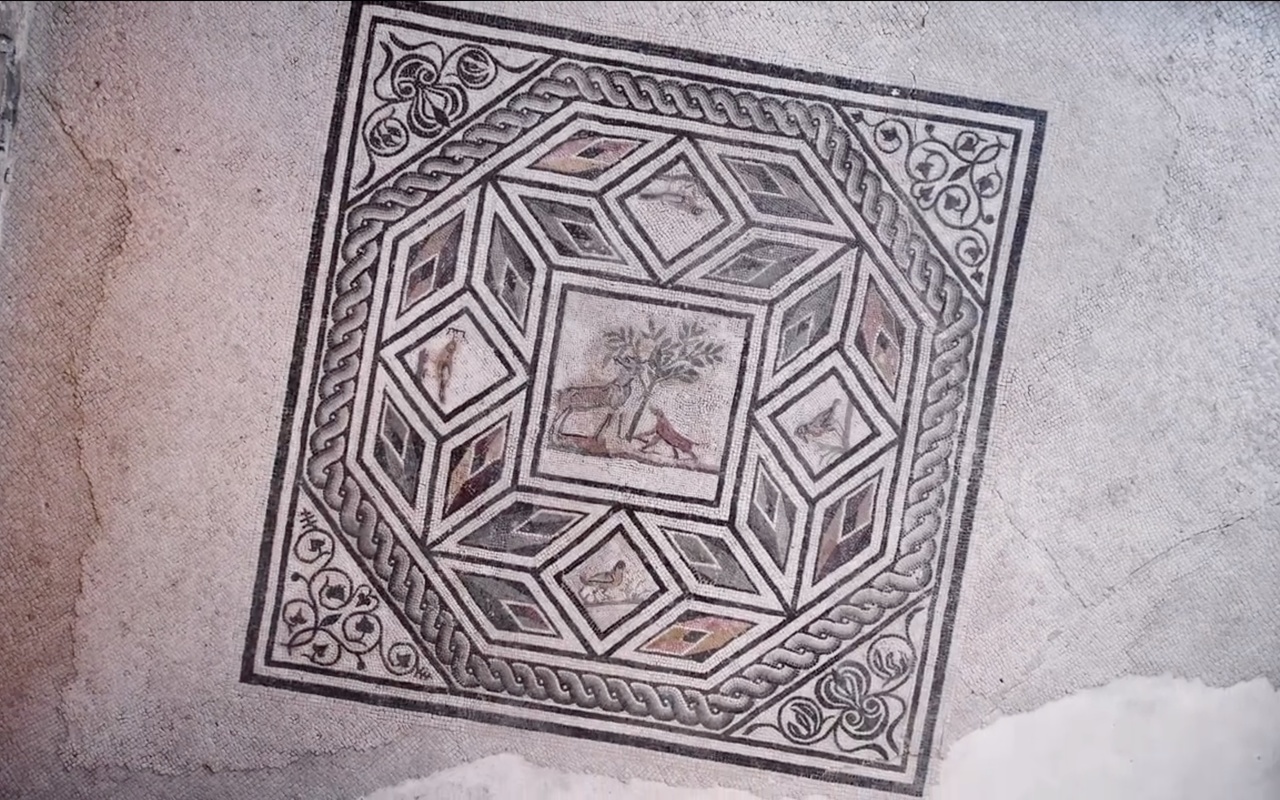The director of the Aquileia Foundation, the archaeologist Cristiano Tiussi Erica leads us to discover the Domus di Tito Macro, the largest ‘Pompeian’ domus and its incredible mosaics, discovered in Northern Italy. Tito Macro and the Domus Tito Macro represent a unicum from a series for a series of reasons, the first of which is undoubtedly the extension of this house of about 1,500 square meters, one of the largest houses that have been found in Italy northern. And then because it is the only house from the Roman age that has been fully excavated right here in Aquileia and this meant that the project that then developed, the enhancement project, also aimed at the reconstruction of the volumes that distinguished a domus thus giving an idea of how the house should be structured, of what spaces it included, also through the brick roofs that were built. The house of Tito macro is a typically Pompeian house as regards its articulation: we have an atrium we have, the tablinum – that is, the place where the landlord received his guests – we have a large reception room of almost 100 square meters . We have a back garden which evidently gave the whole room a cool summer feel. We don’t know exactly who Tito Macro was then. His name appears on a stone weight that was found during excavations inside the house. Suppose it could be a merchant, therefore a person who had enriched himself with those commercial traffics that really placed Aquileia at the center of the Mediterranean, in particular as a place of exchange between the Mediterranean and the Adriatic and the Danubian and Balkan hinterland still today we define mitteleuropa. A therefore privileged position that caused a boom in Aquileia in that period. The mosaics that we find in the Domus of Tito Macro are mosaics that somewhat represent the mosaic craftsmanship sample of Aquileia in that period. We are around the beginning of the first century AD or at the earliest at the end of the first century BC and therefore they give us a whole series of indications on what the characteristics and tastes were at the time of the wealthy Aquileisi. So we really have the idea of how this important form of craftsmanship developed in that period which actually gives Aquileia the title of “city of mosaics”.
The wonders of Tito Macro’s domus
81
previous post
